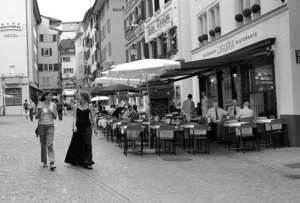by R.I. Pienaar | Aug 24, 2004 | Usefull Things
I am again spending some time figuring out the workings of IPSec, this time I was interested in how to get it all going on PIX machines. While looking for information I came across 2 great articles about IPSec. They provide a simple introduction and were written by Dr. Peter J. Welcher.
IPsec phobia is caused by confusion. To cure that, we need some background information and terminology. Believe me, with a little orientation, this stuff makes a whole lot more sense! By the way, there’s lots of mathematics theory behind all this, but you won’t see it here. After all, you don’t need to know any of that to use IPsec.
It is split across 2 articles: IPSec Simplified and IPSec Simplified – Part 2.
The authors site has a large number of security and network related articles that seem of a very high quality and well worth checking out.
by R.I. Pienaar | Aug 24, 2004 | Usefull Things
Newsforge is running an article titled Be your own CA that covers the process for building your own CA as well as giving some background information on how it all sticks together, it is well worth a read if you are unsure how certificates, revocation and so forth works.
I usually use a guide and files found at http://sial.org/howto/openssl/ca/, it includes some make files to automate some of the work and to minimize user error, the two sites compliment each other nicely.
by R.I. Pienaar | Aug 22, 2004 | Photography
I went to Zurich for a few days this week, I have never been to Switzerland and Expedia had some good deals. I took a couple of photos of the city and people, mostly people, a collection of them can be found here. It is a small city with lots of little cramped roads and pavements that’s filled with tables and people eating. This style of architecture is very difficult to show on photos, so I focused mostly on the people.

by R.I. Pienaar | Aug 13, 2004 | Code
Following from my previous post about blocking some more countries I discovered a bit of a short coming in the code I used to calculate CIDR notation from ranges of IP’s. So a bit of searching on CPAN got me Net::CIDR.
use Net::CIDR;
$range = shift;
print (join(“\n”, Net::CIDR::range2cidr(“$range”)) . “\n” );
This will take any given range of ip address in format a.b.c.d-w.x.y.z and spew out a list of subnets required to cover the whole range:
# ./range2cidr.pl 64.139.147.0-64.139.170.255
64.139.147.0/24
64.139.148.0/22
64.139.152.0/21
64.139.160.0/21
64.139.168.0/23
64.139.170.0/24
So with this I now have hopefully a more accurate set of rules that will not block bits of New Zeeland as well by accident.
by R.I. Pienaar | Aug 13, 2004 | Uncategorized
Digital Outback Photo has a good article about Depth Of Field, well worth a read for anyone interested in moving from taking snapshots to taking photos that appeal on an artistic level.
It covers the basics of Depth of Field, how to achieve it using a camera and why in some cases it is very difficult, it then introduces the new Photoshop CS Lens Blur Filter that can simulate this effect where it was too difficult to achieve using the camera alone.
One of the skills that separates novice photographers from the more experienced is an awareness and control over “Depth of Field” (commonly referred to by its abbreviation “DOF”). Sometimes, to get the shot, we need to use a very small aperture. When we do, not only is the subject in sharp focus, but features in the background and/or foreground can compete for attention. This tutorial will walk you through the steps in using a new feature in Adobe Photoshop CS: the Lens Blur filter.


